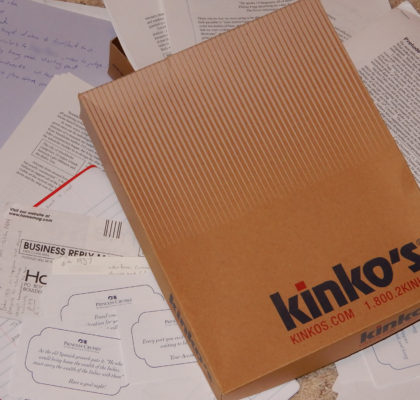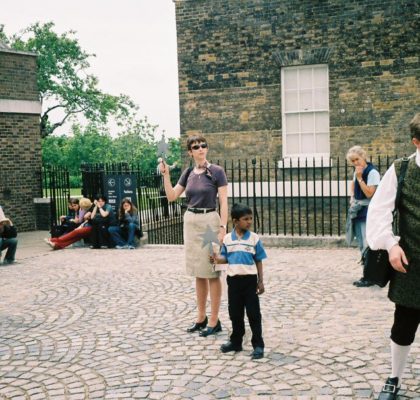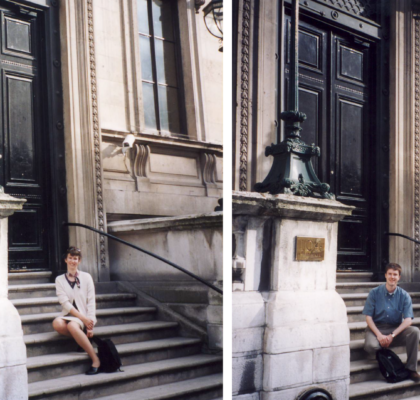- March 4, 2001 (Day -4)
- March 6, 2001 (Day -2)
- March 7, 2001 (Day -1)
- March 8, 2001 (Day 1)
- March 10, 2001 (Day 3)
- March 11, 2001 (Day 4)
- March 12, 2001 (Day 5)
- March 13, 2001 (Day 6)
- March 14, 2001 (Day 7)
- March 15, 2001 (Day 8)
- March 16, 2001 (Day 9)
- March 17, 2001 (Day 10)
- March 18, 2001 (Day 11)
- March 19, 2001 (Day 12)
- Time Check: Day 12
- March 20, 2001 (Day 13)
- March 21, 2001 (Day 14)
- March 22, 2001 (Day 15)
- March 23, 2001 (Day 16)
- March 24, 2001 (Day 17)
- March 25, 2001 (Day 18)
- March 26, 2001 (Day 19)
- March 27, 2001 (Day 20)
- March 28, 2001 (Day 21)
- March 29, 2001 (Day 22)
- March 30, 2001 (Day 23)
- Time Check: Day 23
- March 31, 2001 (Day 24)
- April 1, 2001 (Day 25)
- April 2, 2001 (Day 26)
- April 3, 2001 (Day 27)
- April 4, 2001 (Day 28)
- April 5, 2001 (Day 29)
- Time Check: Day 29
- April 6, 2001 (Day 30)
- April 7, 2001 (Day 31)
- April 8, 2001 (Day 32)
- April 9, 2001 (Day 33)
- April 10, 2001 (Day 34)
- April 11, 2001 (Day 35)
- Time Check: Day 35
- April 12, 2001 (Day 36)
- April 13, 2001 (Day 37)
- April 14, 2001 (Day 38)
- April 15, 2001 (Day 39)
- April 16, 2001 (Day 40)
- Time Check: Day 40
- April 17, 2001 (Day 41)
- April 18, 2001 (Day 42)
- April 19, 2001 (Day 43)
- Time Check: Day 43
- April 20, 2001 (Day 44)
- Intermission
- April 21, 2001 (Day 45)
- April 22, 2001 (Day 46)
- April 23, 2001 (Day 47)
- April 24, 2001 (Day 48)
- April 25, 2001 (Day 49)
- April 26, 2001 (Day 50)
- April 27, 2001 (Day 51)
- April 28, 2001 (Day 52)
- Time Check: Day 52
- April 29, 2001 (Day 53)
- April 30, 2001 (Day 54)
- May 1, 2001 (Day 55) – Part I
- May 1, 2001 (Day 55) – Part II
- May 2, 2001 (Day 56)
- May 3, 2001 (Day 57)
- May 4, 2001 (Day 58)
- May 5, 2001 (Day 59)
- May 6, 2001 (Day 60)
- May 7, 2001 (Day 61)
- Time Check: Day 61
- May 8, 2001 (Day 62)
- May 9, 2001 (Day 63)
- May 10, 2001 (Day 64)
- May 11, 2001 (Day 65)
- May 12, 2001 (Day 66)
- May 13, 2001 (Day 67)
- May 14, 2001 (Day 68)
- May 15, 2001 (Day 69)
- Time Check: Day 69
- May 16, 2001 (Day 70)
- Time Check: Day 70
- May 17, 2001 (Day 71)
- May 18, 2001 (Day 72)
- May 19, 2001 (Day 73)
- May 20, 2001 (Day 74)
- May 21, 2001 (Day 75)
- May 22, 2001 (Day 76)
- May 23, 2001 (Day 77)
- May 24, 2001 (Day 78)
- May 25, 2001 (Day 79)
- Intermission – Part II
- May 27, 2001 (Epilogue)
March 27, 2001 (Day 20): On the Trans-Mongolian Express, departing Moscow – Late
On our way. We have boarded the train to Beijing. Barring unforeseen circumstances (which should not exist) we are settled into our home of the next several days.
 We started the day with what was likely the last decent shower we will have in days. After packing up our gear, we set out on our last day in Moscow.
We started the day with what was likely the last decent shower we will have in days. After packing up our gear, we set out on our last day in Moscow.
First on the list was Lenin’s mausoleum in Red Square. We knew that cameras were forbidden inside the tomb, but hoped that there would be either a camera check nearby or we could trade-off: one of us would hold our gear while the other went through the tomb and then swap. Neither was the case.
On viewing days, Red Square is closed from 10am to 1pm to all but those choosing to visit the mausoleum. The furthest we got was the northwest entrance between the Historical Museum and the walls of the Kremlin. The staff identified that we had “inappropriate items” we could go no further. And there was no camera check. We were told that there was a place where we could check our stuff by the tower near the Alexandrovsky Gardens. “A ten minute walk,” we were assured.
By the time we located the place to baggage check – hidden beneath the brick Trinity Bridge, in case you need to know – we had practically given up on visiting the tomb. We unloaded our equipment and shoveled rubles at the baggage check matron until she stopped indicating she needed more. It was after noon and we thought last admissions to see old V.I. would happen soon. Our haste to get back in line to view a dead Bolshevik was, in retrospect, unwise as it drew the attention of one member of the Moscow police and a security officer.
These officials managed to capture our attention in a way that indicated they requested our presence. When they asked to see our passports and visas, we simultaneously responded, “Why?” With the value of hindsight, our query seems like less than a stellar idea. We read about scenarios where officials seek to separate visitors from their passports and visas to extract some fee, hence our hesitance to be separated from our documents. We were fortunate that neither of them took immediate offense.
Officer in olive greatcoat: Are you aware that Russia was at war in Chechnya?
Me (playing dumb): No.
The security officer began a lengthy explanation about the need for additional security when the country is at war. During his lecture, we both decided that if he was not legit, the man in the dark blue police uniform was, so we were provided them our documents. After a cursory check, our paperwork was returned and the officers wished us well. I had the feeling that he was flexing his authority on obvious tourists but we were fortunate he did not think we were worth any more of his time.
Anna: Perhaps we should not have been in such a hurry. Lenin isn’t going anywhere.
Me: True. He will probably be just as dead when we see him.
Proudly displaying our claim checks, we were allowed to continue to the tomb. Walking to the mausoleum across the massively empty Red Square was stunning. There was no activity in the square save the small ant-like trail of people filing towards the tomb. Somber guards are stationed at every turn in this dark granite shrine – inside and out – to keep the line silent and moving. At the moment when my eyes began to adjust to the dim surroundings, I turned the corner into the central chamber and there, bathed in light, is Mr. Ulyanov himself.
The question is “Is it really Lenin?” While I am no expert in embalming, my opinion is that the Russian authorities have gone through far too much trouble for it NOT to be Lenin. Recently, the fingers on his right hand were curled into a fist, supposedly to cover signs of mold around his fingernails. The lighting is terrible and unflattering. If he really were a wax model, no one would go through this kind of trouble. A fake display might even look more realistic.
Having survived our visit to see an embalmed Bolshevik, we hiked up the Trinity Bridge to tour the treasures within the Kremlin – and mark off another UNESCO World Heritage site from our checklist. With at least six churches and the Armory museum within its walls, one could easily spend a day exploring the sites. We obtained a guidebook to fill in the details.
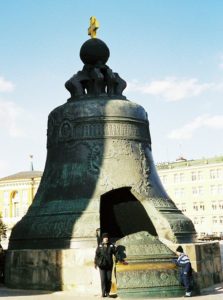
Since the seat of government still lies within the crenelated red brick fortress, suffice to say we did not have run of the place. How do you cross the road in the Kremlin? You don’t. The policeman on the opposite side of the road assured me politely yet resolutely that going over to his side of the street, even to take a photo, would be a bad choice. An ad hoc fence of cannons left by Napoleon’s retreating army in 1812 surround the Arsenal – another hint that some buildings are off-limits to visitors.
In addition to the various churches and museums, he grounds are littered with interesting artifacts. The 200-ton Tsar Bell rests on a pedestal near the Cathedral of the Archangel Michael. As the cast monstrosity was in the foundry pit, the story goes, water intended to extinguish a burning building came in contact with the bell and an 11-ton fragment broke off. Broken and incapable of being rung, the bell sat in the pit for 100 years . The broken fragment is about as tall as Anna.
Another curiosity resting in the Kremlin grounds is the Tsar Cannon, arguably the largest caliber cannon in the world . It is also ornately designed and it is highly unlikely that it could effectively fire the one-ton cannonballs stacked in a pyramid next to it. Curiously, this ‘weapon’ is aimed towards the Russian Senate building. The Kremlin Armory is the museum to see – well worth the additional admission price. It is a treasury full of suits of armor, thrones, gowns worn by Empresses and members of court, and a huge room full of opulent carriages. Some clown kept setting off the alarm by leaning too close to one of the carriages. Sorry about that.
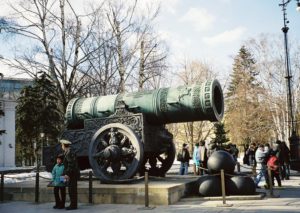
And then there were the Faberge Easter Eggs. Sadly missing from this collection was the one piece I had hoped to see: the Trans-Siberian Faberge Egg, containing a small replica of the train. As consolation, we were able to see the Tricentennial Faberge Egg and the Cap of Monomachus, a fur-lined ceremonial crown used in the coronation of all of the Russian monarchs between the 15th and 17th Century (with the notable exception of Peter the Great). Both were pieces we saw as part of the “Treasures of the Tsars” exhibit in Topeka, Kansas so it was exciting to view them again – this time in their home.
We got back to the hotel at 6.30pm, leaving us just over five hours until our train left for Beijing. We still had a voucher that permitted us to enter the Intourist, but not necessarily to remain there. We adopted the tactic that if we looked like we knew what we were doing no one would trouble us. After repacking our gear, we went to the hotel’s Soviet-era hard currency watering hole, the Bar Traveler. The bar was so dimly lit and empty that we had reason to doubt it was even open. Arriving with all of our gear drew the attention of the three patrons and perhaps the concern of the barkeep, but they let us stay. We ordered drinks and had a rather nice Chicken Kiev for dinner. After we ate, the barkeep came over and told us that the bar would be open until 4am and we were welcome to stay until then. We were grateful for the offer and hoped not to have to completely rely on it. The bar wasn’t that busy so we inconvenienced no one. During the hours we stayed there, the number of patrons varied little – I doubt there were ever more than six people in there at any one time. Every so often, an interestingly clad woman would stick her head in and, after surveying the clientele, decide her time was better spent elsewhere.
The trip to Yaroslavskya rail station was relatively uneventful. It was no fun hauling our bags through the metro but the trains were running regularly so we do not have much reason to complain. At the station waiting area, we took the sudden migration all of the people with Asiatic features as a cue that a boarding call had been made.
On the platform, only meters away from our train, lay our final test: a woman checking tickets. She was trying to tell us something, but we could not figure out what it was. She repeated her phrase slower, then louder, adding a couple gestures – all the time my response, in Russian, was constant, “I do not understand.” Finally, she said a word we both understood: “gorod,” Russian for “city.” With relief I responded, “Peking” and she waved us towards the gate for Beijing-bound passengers.
The train departed from the station right on time. We have been given a timetable listing all of the stops along the way and when we arrive and depart from them. In Russia, all of these times are based on the Moscow clock, which will be very interesting the further east we go. Our attendant has brought in a thermos full of hot water. The samovars at the end of the carriage promise that there is plenty more where that came from. Our room is blissfully equipped with ceramic tea mugs, complete with saucer and lid and a complementary bag of green tea. We are chugging and rolling in an eventual eastward direction, our progress punctuated every few kilometers when the entire carriage shakes as if involved in a controlled collision.
I am tired, but content. We are on our way… and I am off to bed.
Excerpts from Anna’s journal included.
This entry was posted in Around the World